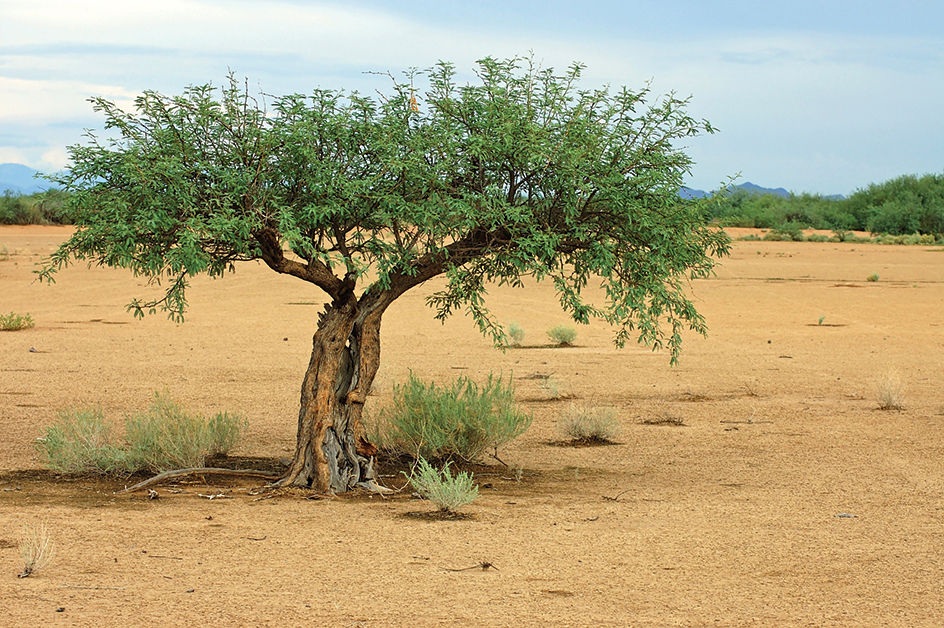Mesquite, << mehs KEET, >> is the name of a group of thorny, low shrubs that grow in dry climates. The most common species, the honey mesquite, is found in the southwestern United States, Mexico, and the West Indies. It also grows in the Hawaiian Islands, where it was planted by missionaries.

A mesquite needs little water and will grow in deserts too hot and dry for many plants. As parts of the shrub die and decay, they release nitrogen compounds into the soil. As a result, the sandy soil around mesquite often contains enough nitrogen to allow a variety of plants to grow.

In the mid-1900’s, mesquite began spreading through rangelands in southwestern North America, displacing large areas of grasses. Ranchers often try to eliminate the shrub because grasses provide better food for cattle and other domestic animals.
When a mesquite has plenty of water, it grows into a large tree. It may become 50 to 60 feet (15 to 18 meters) high with a trunk 3 feet (91 centimeters) across. People use the wood of mesquite for fuel, to make fence posts, and to build dwellings. The seeds or beans serve as food for cattle and horses and were once an important food for the Indians of the Southwest. Two kinds of gum taken from mesquite are used to make candies and Mexican dyes.
